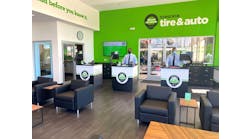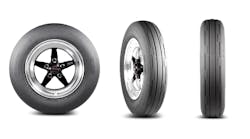This MTD exclusive was written by John Healy, managing director and research analysts with Northcoast Research Holdings LLC, based in Cleveland, Ohio. It also will appear in the October edition of MTD, available soon.
Recent commentary from dealers suggests that consumer demand for passenger and light truck replacement tires was down in August compared to last year, while also showing a stronger decline versus levels seen during July.
The net number of respondents to our latest survey reported that they experienced a 30.8% decrease year-over-year. We also note that our tire demand index was down 31.5% last month on a year-over-year basis.
Our contacts believe that the decline in consumer tire demand can be attributed to spikes in COVID-19 cases that happened in July and August, which have caused many states to reconsider the pace at which they attempt to reopen their economies.
Back in June, the reopening of states seemed to be in “full steam ahead” mode. However, recent infection rates have forced states to be more cautious in terms of making too many changes at the same time. This is reflected in miles driven, which declined by 6.8%, year-over-year, in August.
In addition, dealers believe that the selling calendar has been impacted by COVID-19. This has pushed business back into later months, bringing some degree of optimism for the near-term as winter approaches.
We continue to hold the perspective that volumes - at least in the long run - will be more closely aligned with the current level of GDP growth, with the months ahead likely showing mixed trends that will parallel the rate at which states reopen.
Continued discipline
Our latest survey reveals that the tier-two segment experienced the most significant amount of growth in August, which is a reversion from last month’s trend.
This is relatively unsurprising, as the recent spike in COVID-19 infections in some states, the realities of the long-term economic backdrop and the upcoming presidential election have caused increased uncertainty in recent weeks.
This uncertainty has generally been reflected throughout the COVID-19 crisis, as our tire tier rankings have not experienced month-to-month consistency since the pandemic started in March and continued into April.
We believe that this inconsistency is a function of changing thoughts on when the pandemic will end and when the world will get back to some sense of normalcy. Looking past this, we believe that stay-at-home restrictions will continue to be lifted and a possible COVID-19 vaccine in the coming months will lead to a more confident consumer.
In the meantime, we expect that tire manufacturers will remain disciplined in their efforts to manage the price/volume trade-off in order to maximize operating profit, rather than market share.
We have been very pleased with manufacturers’ disciplined approach to production schedules. And global inventory levels remain relatively lean.
Moreover, as noted in last month’s column, tire dealers and wholesale-distributors are being more tactical with their approach to inventory allocations, given legislative moves, recent pricing actions and raw material prices.
Natural rubber prices climb
Looking closely at raw material costs, the “basket” of raw materials needed to build a common replacement consumer tire fell 6.6% on a year-over-year basis last month, continuing the trend of declining raw material price inputs we have observed.
We note that while significant cost pressures in raw material prices remain, some are starting to ease upwards sequentially.
For example, natural rubber prices rose 17.6% on a year-over-year basis last month, marking the first time this has happened since the end of 2019.
Other raw material prices have experienced declines. We note that carbon black yet again is seeing a reduction in cost pressures. Carbon black prices fell 10.6% last month, the eleventh consecutive month that prices for this particular input declined.
Crude oil prices, which have been pressured over the last six months, are down 44% year-over-year, on average. Prices fell 23.5% year-over-year in August alone.
We also note that synthetic rubber costs remain negative and have been negative for 17 straight months, year-over-year. Price pressures on cord, fabric and other tire reinforcement items continue to track negative at a mid-single-digit rate.
John Healy is a managing director and research analysts with Northcoast Research Holdings LLC, based in Cleveland, Ohio. Healy covers a variety of subsectors of the automotive industry.



